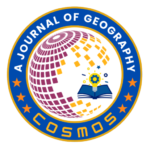| 1 |
Author(s):
Rajesh Singh.
Research Area:
Health Geography
Page No:
1-11 |
Distribution of Health Facilities in Remote Areas of Northeast India: Challenges and Solutions
Abstract
Even distribution of health facilities still poses a big problem in the region as part of Northeast India which is geographically and socio culturally diverse and challenge. This research maps healthcare delivery systems in the eight states of North Eastern Region of India to assess geographical distribution and inequities in providing health care services. However, despite array of government policies and initiatives in health sector, the region still has the problems like, lack of proper physical facilities, inadequate human resource in the health sector, and geographical challenges due to hilly and mountainous terrain of the region.
With the primary and secondary data together, this study offers a net description of the contemporary health facilities such as the Primary Health Centres (PHCs), Community Health Centres (CHCs), and district hospitals to give direction with spatial accessibility concerns. The study also explores the effect of these restricted health care policies on population health with reference to women, children and old aged persons. Real-life examples of some specific district are employed to explain the devastating cumulative impact of weak MG on such health status indicators as high rates of maternal and infant mortality, and increasing incidence of previously controllable diseases.
| 2 |
Author(s):
Ankit Kumar.
Research Area:
Political Geography
Page No:
12-21 |
Geopolitical Theories Mackinder, Spykman, and Their Modern Relevance
Abstract
Introduction of Halford Mackinder and Nicholas Spykman theory are still relevant in contemporary geopolitics. In 1904, Mackinder put forward his famous Heartland Theory, according to which whoever commanded the Eurasian ‘hearth’ would dominate the world. This, he said, is the physical centrality of the location, and historically, it has always been virtually impossible to anticipate the behavior of naval powers. Geopolitics, according to Mackinder, surprisingly influenced the 20th century strategy, the world war, and the Cold War. After that, Spykman came up with the Rimland Theory in the 1940s, with an emphasis on the circumatlantic or coastal margins of most of Eurasia. He said that ruling the so-called “Rimland” would provide economic and geopolitical advantages that were also power locations. The containment policy of the Cold War, aimed at preventing Heartland control, appeared to reflect Spykman’s concept of positive interaction with Rimland countries. The Russian territorialism and the Chinese Belt and Road Developmental Plan replay the Mackinder in the Eurasia contest exchanges. The contemporary American efforts to contain China, especially through the US, translate Abe’s Free and Open Indo-Pacific Strategy as Rimland Theory of Spykman. Both ideas help explain today’s wars by painting stable conflict over some regions that result in global dominance. The contrasting concepts presented by Mackinder and Spykman prove that land and sea power theories are as relevant today as they were in the past and therefore demonstrate the heartland-seaboard equilibrium in world politics.
| 3 |
Author(s):
Ayushi Tiwari.
Research Area:
Cultural Geography
Page No:
22-29 |
Influence of Buddhism on the Cultural Landscape of Sarnath in Varanasi
Abstract
Sarnath, a religious and historical place near Varanasi, demonstrates the significant influence of Buddhism on the development of its culture. In this research paper, the author looks at the impact of Buddhism on the selected cultural, spatial, and socioeconomic aspects of Sarnath, beginning immediately after the institution of the new faith with the first sermon by Gautama Buddha to the present time. The study employs a qualitative approach, utilizing history, archaeological data, and survey observation to delve into the religious architectures, cultural and communal practices, and socio-economic activities influenced by Buddhism. Some findings indicate that the locations of stupas, temples, and monasteries, along with the rituals and festivals, serve to preserve Buddhist values, thereby shaping new cultural landscapes. Furthermore, the ways in which Buddhism influenced local artisans and the roles of pilgrimage and tourism remain essential in the economy. Modernization is one of the biggest threats to heritage sites, but political leadership and residents of Sarnath enhance the prospects for this culture. Therefore, this paper uses Sarnath as a prime example to illustrate the impact of religion on culture, emphasizing the dual role of culture in development and conservation within a dynamic world.
| 4 |
Author(s):
Sandeep Singh.
Research Area:
Environment
Page No:
30-37 |
Sustainable Agriculture: Innovative Practices to Reduce Environmental Footprint
Abstract
Organic farming has proven to be crucial in solving environmental problems associated with conventional farming. Modern agriculture, or more correctly, conventional agriculture, is highly dependent on resources in terms of optimum yields and is hence responsible for enhancing the greenhouse effect, soil erosion, water deferral, and even the extinction of varieties of seeds. This paper focusses on the role of practices in efforts to reduce apparent environmental impacts from agricultural practices while at the same time maintaining or increasing production. Some of these practices are rotation of crops, growing of trees among crops, minimum tillage, site-specific farming, and integrated pest control.
Conservation tillage plays a crucial role in ensuring proper soil aggregation and reducing erosion, thereby preserving organic structures in the soil. Building from IoT and superimposing GPS, precision agriculture allows efficient use of agricultural inputs and slashing wastage. IPM, in turn, uses bio, cultural, and less chemical methods to control pests with the least amount of harm to the environment.
